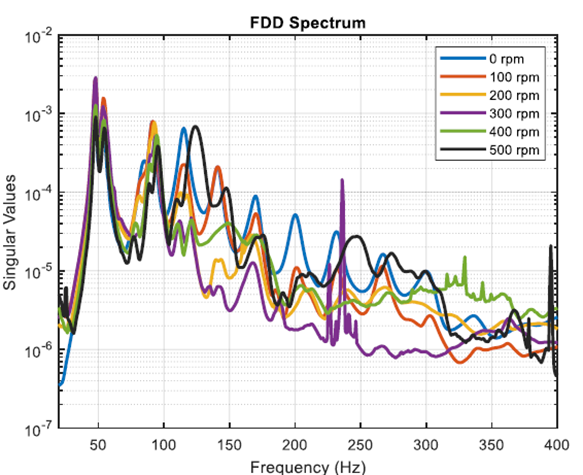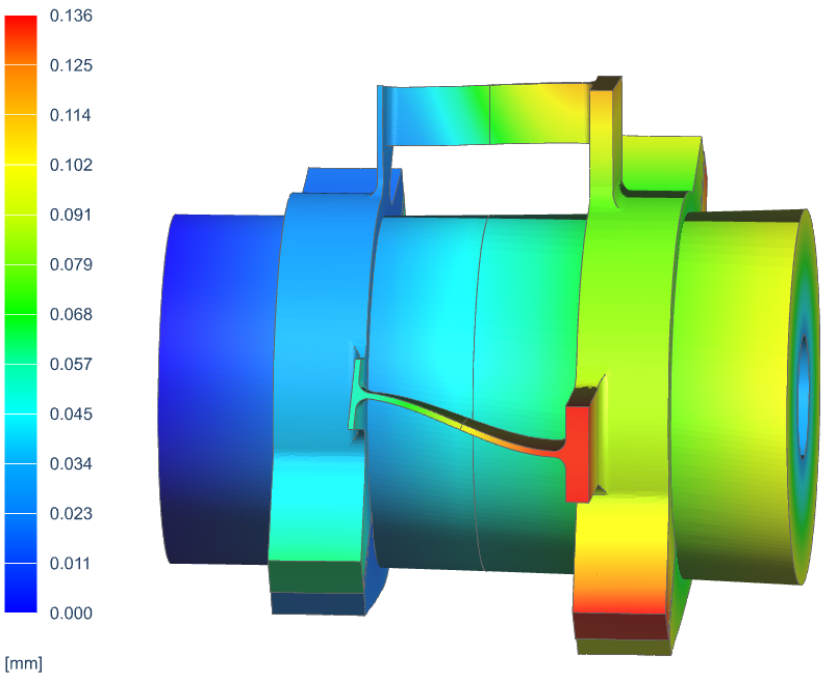With cars moving away from noisy combustion engines towards more quiet electric motors, tire noise becomes more noticeable.
In this short post, we’ll look at a recent case study by the KU Leuven Mechatronic System Dynamics (LMSD) Group, explore how they handled instrumentation, and see how this can help tire manufacturers create quieter products.
How LMSD Research Group Measures Rotating Tire Vibrations
When a tire is in motion, it exhibits natural frequencies that lead to vibrations — vibrations we perceive as noise. By adjusting the tire design, manufacturers can influence these frequencies and reduce unwanted sound and vibrations.
The challenge, however, is that as a tire starts rotating, its natural frequencies shift and split into two components:
- A slower wave moving against the direction of rotation
- A faster wave moving with the direction of rotation
Tracking these shifting natural frequencies is crucial for noise and vibration reduction, but also extremely difficult.
The images below illustrate a typical measurement setup. A tire is driven by an induction motor. As the tire rotates, traditional wired sensors are not an option. For this reason, Forcebit wireless accelerometers (https://www.forcebit.eu/products/dot) are mounted on the tire’s rolling surface.

At high rotational speeds, the outer surface of the tire experiences large centrifugal accelerations while the small vibration signals we care about are easily masked. This leads to two key technical requirements:
- High-resolution sampling is essential to capture subtle vibrations under harsh conditions.
- Lightweight components must be used, as added mass introduces external excitation forces proportional to both the mass and the centrifugal acceleration.
Besides the technical requirements, short installation times are equally important, as every extra minute spent mounting sensors reduces test-bench availability and increases instrumentation effort.
The Use of Wireless Accelerometers
Forcebit MEMS-based wireless accelerometers can measure vibrations directly on the structure. Due to the high normal velocity accelerations, the Forcebit wireless accelerometers were mounted at a slight angle to ensure that frequency content is captured without overloading the sensors. Six sensors were placed evenly around the tire’s circumference, recording synchronously at 2 kHz.

This approach works as long as the sensors are sufficiently accurate, which they are. Since each accelerometer also detects the gravity component, the angular position can be tracked. The angular velocity appears as a DC component superimposed on the signal. While the full derivation is beyond the scope of this post, with the right signal processing, all relevant kinematic and dynamic behaviour can be identified.
After a careful removal of the above-mentioned effects, it is possible to visualize the natural frequency splits, as shown in the frequency spectrum plot in the figure at different speeds.

Turning Data into Quieter Tires
Once vibration data is available, manufacturers can use it to optimize the tire’s design to make quieter tires, for example by shifting critical eigenmodes to less audible frequencies or adding damping materials. Because tire design involves complex braided steel cords within a highly non-linear viscoelastic material, it’s essential to validate each design iteration quickly and efficiently. Reducing testing time has a direct impact on overall development cost and time-to-market.
Translating This to Your Application
Both LMSD and Forcebit have extensive experience in vibration testing and analysis across a wide range of applications. Whether you’re developing quieter tires, optimizing drivetrains, or improving comfort and durability, we can help you find the right measurement approach.
Don’t hesitate to reach out and present your own case!
Stay tuned for more updates on https://www.linkedin.com/showcase/lmsd-kuleuven and https://www.linkedin.com/company/forcebit/ .












